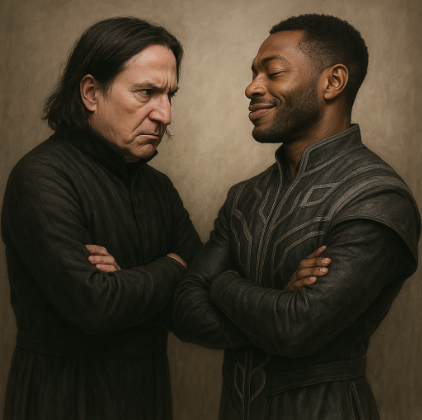"Faithful" Failure
HBO’s Harry Potter Series Faces Backlash Over Reported Snape Casting Choice
April 21, 2025
by Charlie Monero

The upcoming HBO adaptation of Harry Potter has already stirred controversy with the rumored casting of Paapa Essiedu as Severus Snape. While Essiedu is a talented actor with an impressive body of work, many fans are questioning how his casting aligns with HBO’s previous assurances that the series would be a "faithful adaptation" of J.K. Rowling’s beloved books.
Severus Snape is consistently described throughout the Harry Potter series with distinct physical traits, including his "sallow skin" (Harry Potter and the Deathly Hallows, Chapter 32, Page 658), "pale face" (Half-Blood Prince, Chapter 28, Page 595), and even "marble white" (Deathly Hallows, Chapter 32, Page 660). These descriptors paint a clear picture of the character’s appearance, making the reported casting choice a significant departure from the text.
He did not know what he felt as he saw Snape's white face, and the fingers trying to staunch the bloody wound at his neck. (Harry Potter and the Deathly Hallows, Chapter 32, Page 658)
Similarly, Rowling describes Snape’s face as marble white, reinforcing his signature pallor:
And now Snape looked at Voldemort, and Snape’s face was like a death mask. It was marble white, and so still that when he spoke it was a shock to see that anyone lived behind the blank eyes. (Harry Potter and the Deathly Hallows, Chapter 32, Page 660)
Another passage highlights Snape’s complexion in stark terms:
Snape’s sallow skin had gone the color of sour milk. (Harry Potter and the Deathly Hallows, Chapter 32, Page 658)
A further description of Snape’s pallor appears in Half-Blood Prince:
Snape’s pale face, illuminated by the flaming cabin, was suffused with hatred, just as it had been before he had cursed Dumbledore. (Harry Potter and the Half-Blood Prince, Chapter 28, Page 595)
This casting decision follows a trend seen in multiple recent adaptations, where characters originally described as white have been portrayed by Black, Latino, or other non-white actors in the name of "diversity, equity, and inclusion." While increasing representation in media is an admirable goal, many argue that it should not come at the expense of respecting the original text. If the adaptation aims to honor Rowling’s work, then changing fundamental aspects of a character’s description seems ...
Critics of this casting choice are quick to point out that there are already notable Black characters in the Harry Potter universe, such as Kingsley Shacklebolt, a high-ranking Auror whose commanding presence and deep voice make him a memorable figure in the story. If Essiedu were to be cast in the series, a role like Kingsley’s would align more closely with the character’s description rather than drastically altering an existing one.
While casting decisions are ultimately the domain of creative discretion, HBO's repeated assurance that the series would be a “faithful adaptation” may carry more weight than mere PR. In some contexts, especially where public expectations have been clearly shaped by promotional language, such assurances may rise to the level of implied contractual representation. Though unlikely to result in legal action, deviations from an author’s explicitly described characters—after promising fidelity to the ...
Fans have expressed frustration that this kind of creative liberty often feels one-sided, as characters with distinct non-white ethnicities are rarely reinterpreted as white in the name of artistic flexibility. The argument is not about rejecting diversity but about preserving the integrity of a story that has resonated with readers for decades.
As HBO moves forward with the series, the challenge will be balancing modern industry pressures with respect for Rowling’s original vision. If the goal is truly to create a faithful adaptation, then honoring the author’s descriptions—just as one would for any other literary adaptation—should be a priority.

Media Legality Analyst
M.A., J.D.